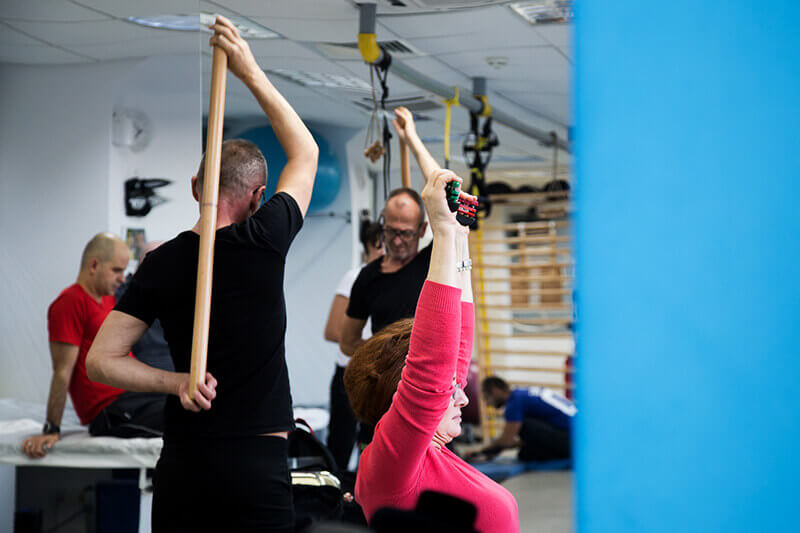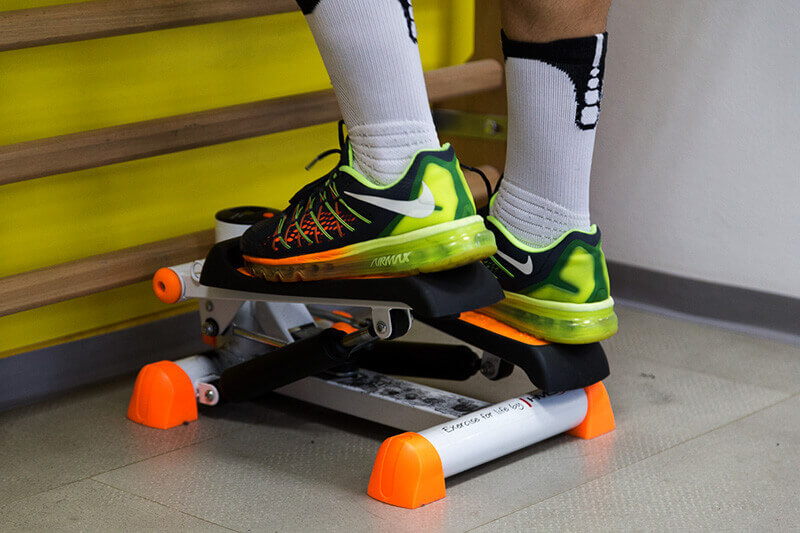See details
READ MORE
Physiotherapy after dislocations
The dislocation is a complex articulation lesion, which is characterized by dislocation of the articulation surfaces, a phenomenon accompanied by articulation and periarticular capsulo-ligamentary lesions. However, the radiological examination is indispensable and is performed both before and after the reduction. The associated lesions can be quantified by classical radiographs, but in order to obtain a more complete picture of the lesions produced as a result of the dislocation, we advise you to perform a more complex imaging investigation, namely an MRI.

The first visit to Centrokinetic will consist of an initial evaluation of one of our doctors, who will collect all the information about the dislocation. You will be asked about the level of pain and the degree of loss of shoulder function.
The doctor will perform a series of examinations to quantify the extent of the movements to get a much clearer picture of the following indicators:
Once the doctor has gathered all the information, you can start the appropriate treatment, customized to your condition and needs.

- The extent of the movements: if you had your shoulder immobilized in a Dessault orthosis / bandage secondary to the reduction of the dislocation, you will most likely feel an articulation stiffness in the shoulder. You will thus begin exercises to improve the range of motion. However, we must be careful not to overdo it, as the structures that support the shoulder can become too loose and there is a risk of recurrence. If the dislocation / subluxation occurred as a result of a multidirectional instability and you did not suffer a traumatic event, you will not require immobilization in an orthosis. Therefore, the shoulder will not show stiffness, and the execution of exercises to improve the range of motion will not be necessary.
- Strength: One of the most important elements of a dislocation recovery program is the recovery and development of muscle mass to improve the stability of the shoulder so that you can fully regain your functionality. The muscle groups the physiotherapist will focus on include the rotator cuff, arm muscles such as the biceps and triceps, and the muscles that support the shoulder blade. You should be under the constant supervision of your physiotherapist to ensure that you perform the exercises properly.

- Posture: Improper posture can cause incomplete shoulder function. Once you learn how to get and maintain a correct posture, you can be sure that your shoulder is in the best position to function the way it was meant to.
- Pain: As a result of a shoulder dislocation, you may experience pain, even of increased intensity. You may also have local bruising on the skin. You can control your pain with painkillers, anti-inflammatory medications and local cold applications. At the same time, our doctors can recommend various physiotherapy procedures in order to reduce the intensity of the pain.
SUCCESSFUL RECOVERY STORIES
MAKE AN APPOINTMENT
FOR AN EXAMINATION
See here how you can make an appointment and the location of our clinics.
MAKE AN APPOINTMENT





































































































































